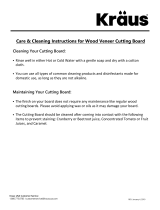
SetupELECTRICAL
MAINTENANCE
SERVICE
PARTS
OPERATIONSSAFETYINTRODUCTION
USE THE QUICK GUIDE PAGE LABELS TO SEARCH OUT INFORMATION FAST!
Table of Contents
INTRODUCTION .....................................2
Woodstock Technical Support .................. 2
W1677 Series Specifications ...................
3
W1711 Series Specifications ...................
4
Controls and Features ...........................
5
SAFETY ...............................................6
Standard Safety Instructions ...................
6
Specific Safety Instructions for Table Saws .. 8
Avoiding Potential Injuries .....................
9
Kickback ..........................................11
Common Terms ..................................
12
ELECTRICAL ....................................... 13
220V Operation ..................................
13
Extension Cords .................................
13
Grounding ........................................13
SETUP .............................................. 14
Unpacking ........................................14
Inventory .........................................14
Shop Fox Classic Fence Inventory
...........15
Shop Fox
Original Fence Inventory ...........16
Machine Placement .............................
17
Cleaning Machine ................................17
Mobile Base ......................................18
Assembly ..........................................18
Test Run ..........................................
22
OPERATIONS ...................................... 23
General ...........................................23
Blade Height .....................................
23
Feed Rate ........................................
23
Blade Selection ..................................
24
Changing Blades .................................
25
Through vs. Non-Through Cuts ................
26
Rip Cuts ...........................................
27
Blade Tilt/Bevel Cuts ...........................
27
Cross Cuts ........................................
28
Miter Cuts ........................................
28
Dado Cuts .........................................
29
Rabbet Cuts ......................................31
Resawing ..........................................33
Aftermarket Safety Accessories ...............
36
Shop-Made Safety Accessories ................
37
MAINTENANCE .................................... 38
V-Belts ............................................38
Cleaning ..........................................38
Table & Base .....................................
38
Lubrication .......................................38
SERVICE ............................................ 39
General ...........................................39
Blade Tilt Stop Bolts ............................
39
Blade Alignment .................................
40
Miter Slot Parallel to Blade ....................
41
Shimming Wings .................................
42
Splitter Adjustment .............................
43
Angle Pointer ....................................
44
Miter Gauge ......................................
44
Replacing V-Belts ................................
45
Adjusting Fence .................................
45
W1677 Wiring Diagram .........................
46
W1711 Wiring Diagram .........................
47
Troubleshooting .................................48
PARTS .............................................. 50
Table/Body Breakdown ........................
50
Motor/Trunnion Breakdown ...................52
Guard/Miter Gauge Breakdown ...............54
Warranty ........................................... 56























